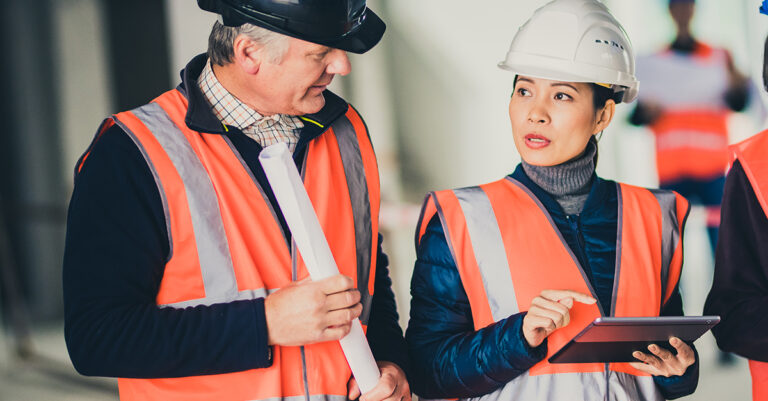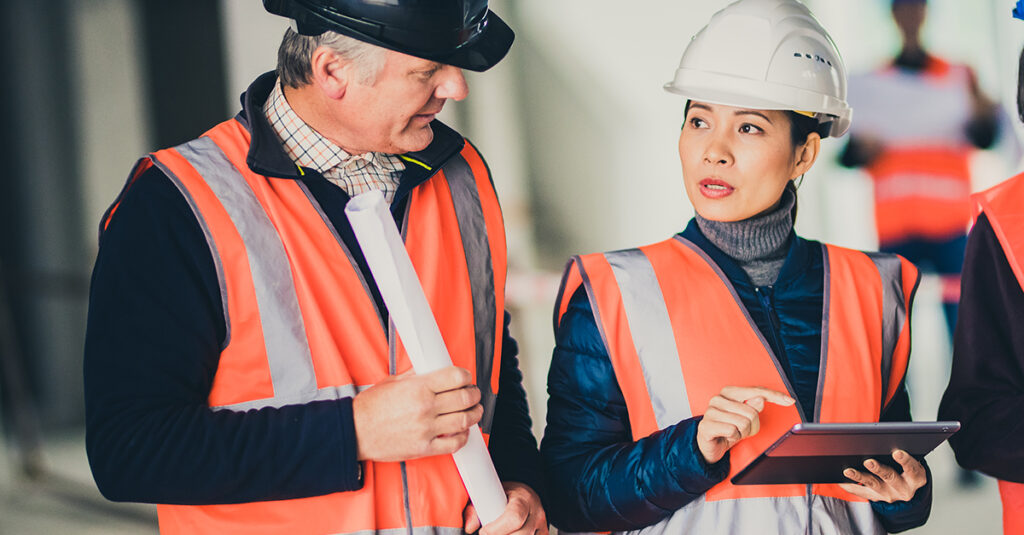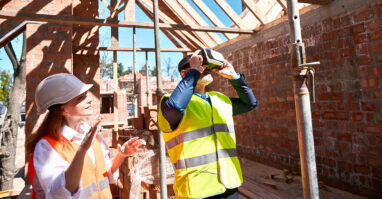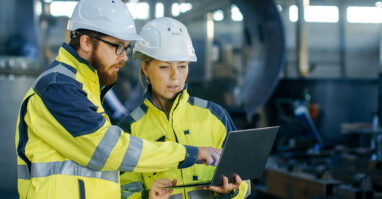Originally published in On-Site, ARB’s Construction Industry newsletter.
Construction jobsites used to be decidedly unfriendly places for mobile technology. You wouldn’t, after all, want to lose your laptop to a steamroller or drop your smartphone in a cement mixer. And connecting these or other devices to a network was often difficult, if not impossible.
These days, mobile technology is playing an increasingly critical role in construction — so much so that jobsites have become much more readily networked. There’s even a term for project locations that are truly tech-friendly: connected jobsites.
Key features
A connected jobsite digitally tracks all resources — including workers, equipment, tools, materials and information. Generally, it does so through a centralized, cloud-based system. This central hub provides a single, real-time data stream to project stakeholders both on-site and off. Key features of connected jobsites include:
Real-time worker and equipment monitoring. Tracking worker locations and equipment usage enhances safety and productivity. For example, knowing workers’ whereabouts can prevent “right person, wrong place” delays and speed up emergency response. Similarly, tracking equipment usage identifies inefficiencies, such as excessive idling, that can drive up fuel costs.
Digital documentation and communication. Connected jobsites largely eliminate manual, paper-based processes. Permits, schedules and reports can be generated or updated via the internet, reducing time spent waiting for approvals and managing documentation. For instance, if a subcontractor encounters a delay affecting concrete pouring, the system immediately notifies the project manager, who can adjust the schedule accordingly.
Integrated applications. As mentioned, well-planned connected jobsites use a unified platform stocked with construction-specific software. This allows project managers and other authorized users to manage timesheets, safety logs, blueprints, schedules and more — streamlining workflow and minimizing miscommunications.
How it happens
Connected jobsites typically rely on three primary elements to share data from the location:
- Hardware. This includes sensors, cameras, wearable tech on workers, and equipment and devices equipped with global positioning system technology.
- Software. Construction management platforms and mobile apps receive input from the hardware and users, enabling team members to monitor workers, assets and activity. In turn, the business can better update its job schedules, track costs and generate financial forecasts.
- Internet connectivity. Construction businesses have a much wider array of options for establishing connectivity nowadays. These include satellite communications, portable Wi-Fi, Bluetooth and cellular networks.
Potential benefits
Creating a connected jobsite will naturally call for a substantial upfront investment in information technology resources. However, if your company invests carefully and has employees with the skill sets to support the concept, the potential return can be worth it.
For instance, tracking assets electronically helps deter theft and more quickly recover stolen or lost equipment, tools and materials. Additional benefits may include:
- Fewer accidents and injuries, and therefore lower workers’ comp costs, thanks to more carefully monitored jobsites, and
- Better financial management as more timely, accurate data enhances bidding, scheduling, job costing and accounting.
One way to ease into connected jobsites is to start small with subscription-based hardware and software, then scale up as you eliminate problems and get more comfortable.
Sooner or later
To be clear, connected jobsites may not be feasible for every construction business or project. However, as technology evolves and expands, you’ll likely find yourself on one eventually.
This publication is distributed with the understanding that the author, publisher and distributor are not rendering legal, accounting or other professional advice or opinions on specific facts or matters, and, accordingly, assume no liability whatsoever in connection with its use. ©2025
Construction and Real Estate Team Spotlight

Robin Cyr joined ARB in 2010. She is a Tax Director specializing in providing comprehensive tax compliance and consulting services to corporate and individual clients. Robin primarily serves industry leaders in the manufacturing, construction, and nonprofit sectors. As both a CPA and a lawyer, she provides exemplary tax and consulting services related to estate and succession planning.






